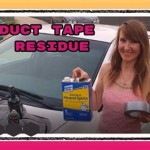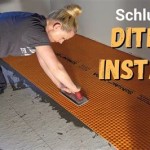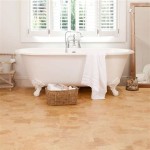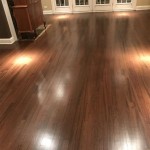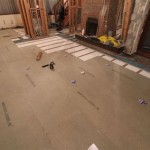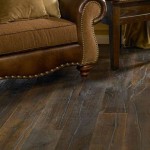How To Remove Sticky Glue From Wooden Floor
Sticky glue on wooden floors is a common nuisance that can arise from various sources, including spilled adhesives, misplaced craft projects, or accidental residue from furniture pads. Removing this sticky substance requires a careful approach to avoid damaging the wood's finish or the wood itself. Understanding the type of glue, the finish on the floor, and the appropriate cleaning techniques are essential for a successful outcome. This article provides a comprehensive guide to safely and effectively remove sticky glue from wooden floors.
Before attempting any removal method, it is critical to identify the type of glue adhered to the wooden floor. Different adhesives respond differently to various solvents and techniques. Common types of glue encountered include: water-based glue (e.g., school glue, white glue), solvent-based glue (e.g., construction adhesive, contact cement), hot melt glue, and cyanoacrylate glue (e.g., super glue). Identifying the specific glue type will inform the selection of the most appropriate and effective removal method.
Furthermore, it is equally important to determine the type of finish applied to the wooden floor. Common finishes include polyurethane, varnish, lacquer, shellac, and wax. Polyurethane finishes are generally more durable and resistant to solvents compared to shellac or wax finishes. Using an inappropriate solvent or abrasive technique can damage or strip the floor's finish, leading to discoloration, scratches, or dullness. Consequently, it is prudent to test any cleaning solution in an inconspicuous area before applying it to the visible glue residue.
Key Point 1: Gentle Removal Methods
The initial approach to removing sticky glue should always involve the gentlest methods possible to minimize the risk of damage. These methods often involve less aggressive solvents and techniques that primarily soften the glue, making it easier to lift from the surface without abrading the finish.
One of the simplest and often effective methods is to use warm water and a mild dish soap. Mix a small amount of dish soap with warm water, dampen a soft cloth with the solution, and gently apply it to the glue residue. Allow the warm, soapy water to sit on the glue for several minutes to soften it. After soaking, gently wipe the glue away with the cloth. Avoid excessive rubbing, as this can damage the finish. Repeat the process as needed until the glue is removed. Once the glue is removed, thoroughly dry the area with a clean, dry cloth.
Another gentle method involves using a hairdryer on a low setting. Direct the warm air from the hairdryer onto the glue residue for a short period. The heat will soften the glue, making it easier to scrape away with a plastic scraper or credit card. Ensure the hairdryer is not held too close to the floor for an extended period, as excessive heat can damage the finish. After scraping away the softened glue, clean the area with a damp cloth and dry thoroughly.
Vegetable oil or mineral oil can also be used to soften sticky glue. Apply a small amount of oil to the glue residue and allow it to sit for several minutes. The oil will penetrate the glue, weakening its bond with the floor. Gently wipe the area with a soft cloth to remove the softened glue. After removal, clean the area with a clean cloth dampened with warm soapy water to remove any oil residue, then dry thoroughly.
Key Point 2: Solvent-Based Removal Techniques
If gentle methods prove insufficient, solvent-based cleaning agents can be employed. However, solvents should be used with caution, as they can potentially damage the floor's finish. Always test the solvent in an inconspicuous area before applying it to the glue residue.
Isopropyl alcohol (rubbing alcohol) is a relatively mild solvent that can effectively remove certain types of glue. Apply a small amount of isopropyl alcohol to a clean cloth and gently dab it onto the glue residue. Allow the alcohol to sit for a few minutes to soften the glue. Then, gently wipe or scrape away the softened glue with a plastic scraper. After removal, clean the area with a damp cloth and dry thoroughly. It is essential to work in a well-ventilated area when using isopropyl alcohol.
Acetone (nail polish remover) is a stronger solvent that can be effective for removing stubborn glue residue, particularly super glue or cyanoacrylate adhesives. However, acetone can damage many floor finishes, so it is crucial to test it in an inconspicuous area first and use it sparingly. Apply a small amount of acetone to a cotton ball and gently dab it onto the glue residue. Allow the acetone to sit for a few seconds to soften the glue. Then, carefully scrape away the softened glue with a plastic scraper. Immediately wipe the area with a clean, damp cloth to remove any acetone residue. Dry thoroughly. Adequate ventilation is required when working with acetone.
Goo Gone is a commercially available adhesive remover designed to dissolve sticky residue. It is often effective for removing glue, tape residue, and other sticky substances. Follow the manufacturer's instructions carefully when using Goo Gone. Typically, the product is applied to the glue residue, allowed to sit for a specified period, and then wiped away with a clean cloth. It is essential to test Goo Gone in an inconspicuous area before applying it to the visible glue residue. Clean the area with a damp cloth and dry thoroughly after removal.
Paint thinner or mineral spirits can also be used, but these are potent solvents and should be reserved for situations where other methods have failed. Always test in an inconspicuous area first. Apply a small amount to a cloth and gently rub the glue. Wipe away residue with another clean cloth and then clean the area with a damp cloth and dry thoroughly. Ensure proper ventilation.
Key Point 3: Mechanical Removal and Prevention
In situations where the glue is particularly stubborn, or the finish is heavily damaged already, mechanical removal methods may be considered. These methods involve physically removing the glue using tools or abrasive materials. However, they should be used with extreme caution to avoid further damage to the floor.
A plastic scraper or putty knife can be used to carefully scrape away softened glue. Ensure the scraper is held at a shallow angle to avoid gouging the floor. Gently apply pressure and scrape away the glue in small increments. Avoid using metal scrapers, as they can easily scratch the floor's finish. After scraping, clean the area with a damp cloth and dry thoroughly.
Fine-grit sandpaper can be used to gently sand away stubborn glue residue. However, this method should only be used as a last resort and with extreme caution. Use very fine-grit sandpaper (e.g., 400-grit or higher) and apply very light pressure. Sand only the affected area and avoid sanding the surrounding finish. After sanding, clean the area with a damp cloth and dry thoroughly. It may be necessary to refinish the sanded area to blend it with the surrounding floor.
Preventing future glue mishaps is always the best strategy. Use drop cloths or protective coverings when working with glue or adhesives. Ensure that furniture pads are securely attached to furniture legs to prevent them from leaving adhesive residue. Clean up spills immediately to prevent the glue from hardening and becoming more difficult to remove. Regularly inspect the floor for any signs of sticky residue and address them promptly.
Furthermore, consider using less aggressive adhesives whenever possible. Water-based glues are generally easier to clean up than solvent-based glues. When using strong adhesives, ensure proper ventilation and follow the manufacturer's instructions carefully. By taking these preventative measures, the risk of sticky glue residue on wooden floors can be significantly reduced, thereby minimizing the need for aggressive removal methods.
Ultimately, the successful removal of sticky glue from wooden floors depends on a combination of careful assessment, appropriate technique selection, and patience. Starting with the gentlest methods and progressing to stronger solvents or mechanical means only when necessary will help protect the floor's finish and maintain its appearance.

Removing Glue Or Adhesive From Hardwood Floors The Speckled Goat

How To Remove Glue From Wood Floors Pete S

4 Ways To Remove Adhesive From A Hardwood Floor Wikihow

Flooring How Can I Remove Carpet Adhesive From Hardwood Floors Home Improvement Stack Exchange

4 Ways To Remove Adhesive From A Hardwood Floor Wikihow

Removing Glue Tar Paper From Hardwood Floors Farmhouse Restoration Day In The Life

4 Ways To Remove Adhesive From A Hardwood Floor Wikihow

How To Remove Glue From Wood Floors Pete S

4 Ways To Remove Adhesive From A Hardwood Floor Wikihow

Removing Parquet Flooring Floor Adhesive Lessons Learned Life After 40
See Also
